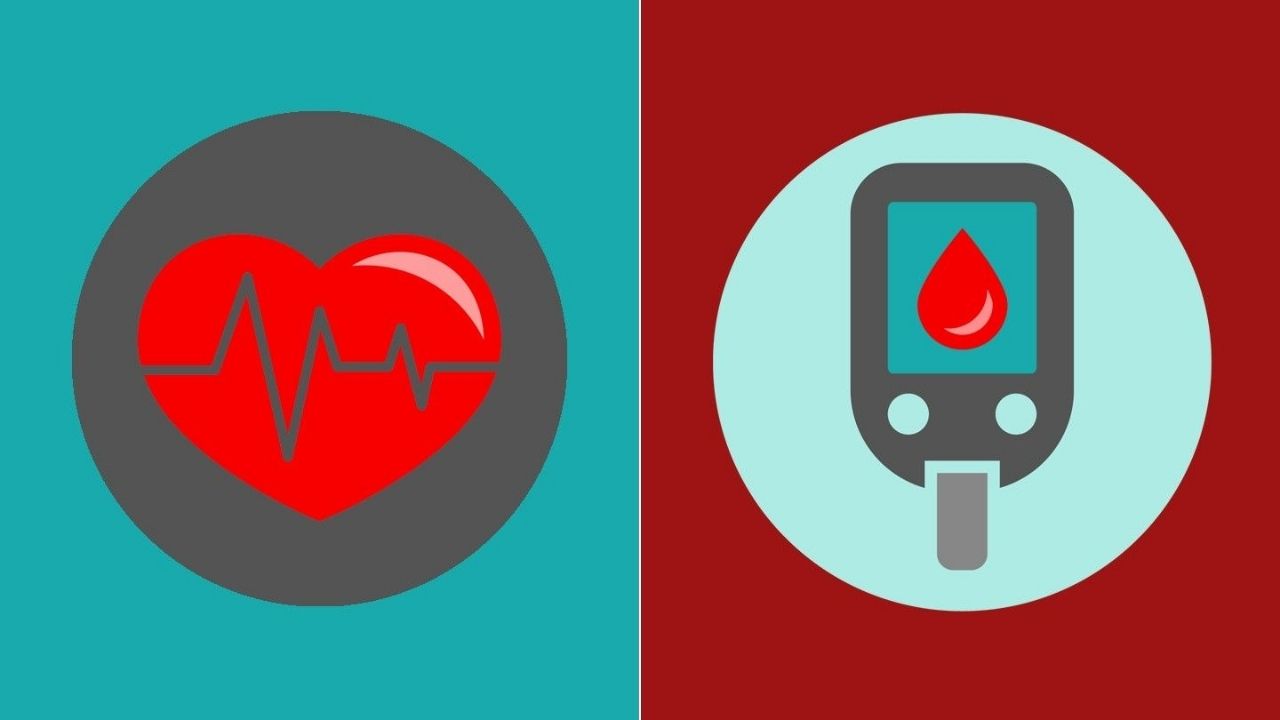People with diabetes have to take special precautions with their health. But there is one more disease that goes hand in hand with diabetes – hypertension or high blood pressure. Hypertension is a silent killer. People suffering from diabetes and hypertension are at twice the risk of heart disease than a person dealing with only diabetes or hypertension.
Individuals with high blood pressure require too much force to pump blood through their heart and blood vessels. If this is not controlled, high blood pressure can tire and enlarged heart muscle. The normal range is 120/80. 120 is a systolic pressure of your arteries when the heart squeezes and 80 is diastolic pressure when the heart is at rest. Healthy people should get check their blood pressure once every two years and the number increases to four times every year for people living with diabetes.
Symptoms of high BP – Headache, dizziness, blurred vision.
Preventive methods
Reduce your salt intake Engage in stress-relieving activities Exercise regularly Get to and stay at a healthy weight Avoid excessive alcohol intake Stop smoking and avoid exposure to secondhand smoke Monitor your blood pressureDASH Diet for hypertensive patients
In a conversation with Medicircle, Dr. Ripen Gupta, Interventional Cardiologist, and Director at Max Smart Super Speciality Hospital in New Delhi spoke about hypertension and informs that there is a specific diet called DASH Diet which is specifically meant for patients to control their blood pressure. It has 4 - 5 components. One important component is that we should eat more vegetables, fruits and more low-fat dairy means skim milk or paneer. The patient should take more fish, poultry, and nuts. Patients have to cut down on the fats, saturated fats, trans fats and decrease cholesterol in the diet. The patient should cut down on red meat, sugary drinks, and sugars. So, this diet can lower blood pressure and in fact, it is equivalent to one tablet of BP. So, if a patient follows this, he will be able to control BP with lifestyle management only.
Symptoms of blood sugar - excessive thirst, frequent need to urinate, increased nighttime urination, weakness, and tiredness, blurred vision
Reference for blood sugar values
Normal: Less than 100 milligrams per deciliter (mg/dl) Prediabetes: Between 100–125 mg/dl Diabetes: A reading of 126 mg/dl or aboveThe link between hypertension and diabetes
Obesity Inflammation Oxidative stress Insulin resistanceIndians take around 10 to 12 grams of salt and what is recommended is 4 - 5 grams. A hypertensive patient should take 2.5 grams of salt only, which is something like one teaspoon of salt in 24 hours. Out of 140 crores people, we may be having 40 to 50 crores people who are hypertensive. No other disease is that prevalent in India. This is a major issue. If we don’t stop here then India will be the hypertension capital of the world.
Diabetes and hypertension share common pathways such as SNS, RAAS, oxidative stress, adipokines, insulin resistance, and PPARs. These pathways interact and influence each other and may even cause a vicious cycle. Hypertension and diabetes are both results of metabolic syndrome. They may, therefore, develop one after the other in the same individual. Central obesity is the cause of metabolic syndrome. Therefore, the optimization of lifestyle remains the cornerstone in the prevention and treatment of diabetes and hypertension.

 High blood pressure and high blood sugar often occur alongside. Studies also show that there are some links and risks associated between them
High blood pressure and high blood sugar often occur alongside. Studies also show that there are some links and risks associated between them









.jpeg)

.jpeg)
.jpeg)

.jpeg)


.jpeg)



.jpeg)
.jpeg)
.jpeg)


.jpg)


.jpeg)
.jpeg)